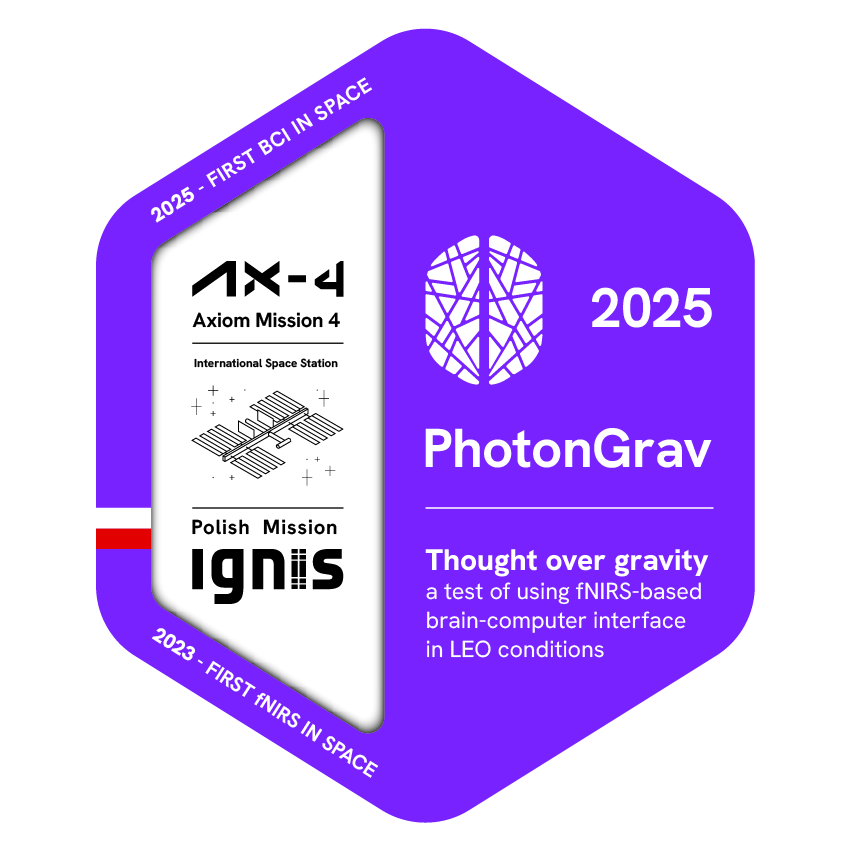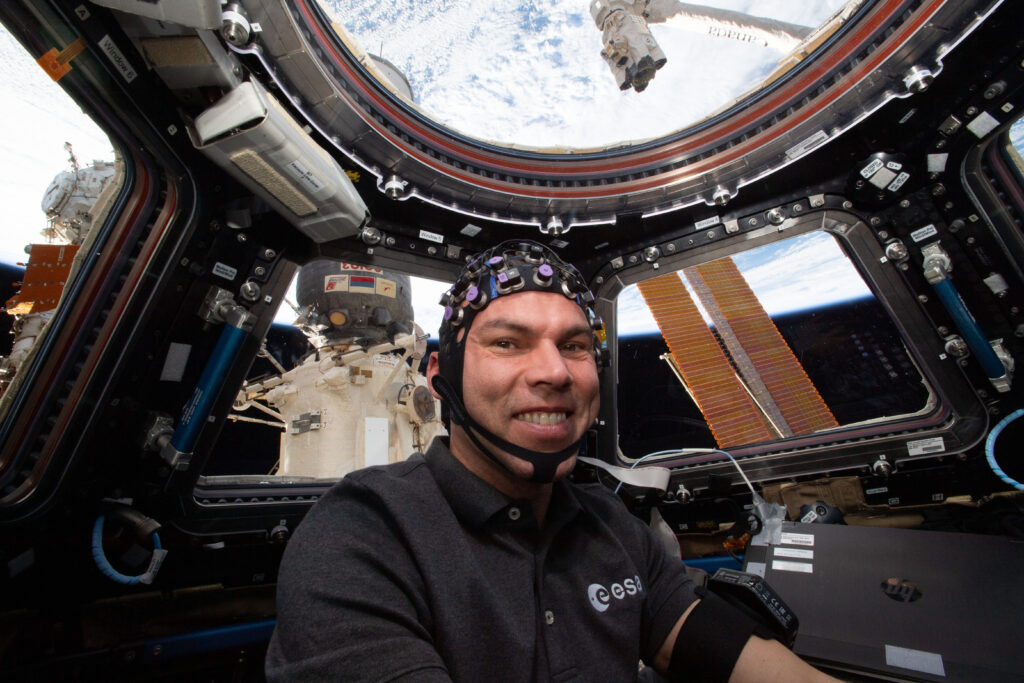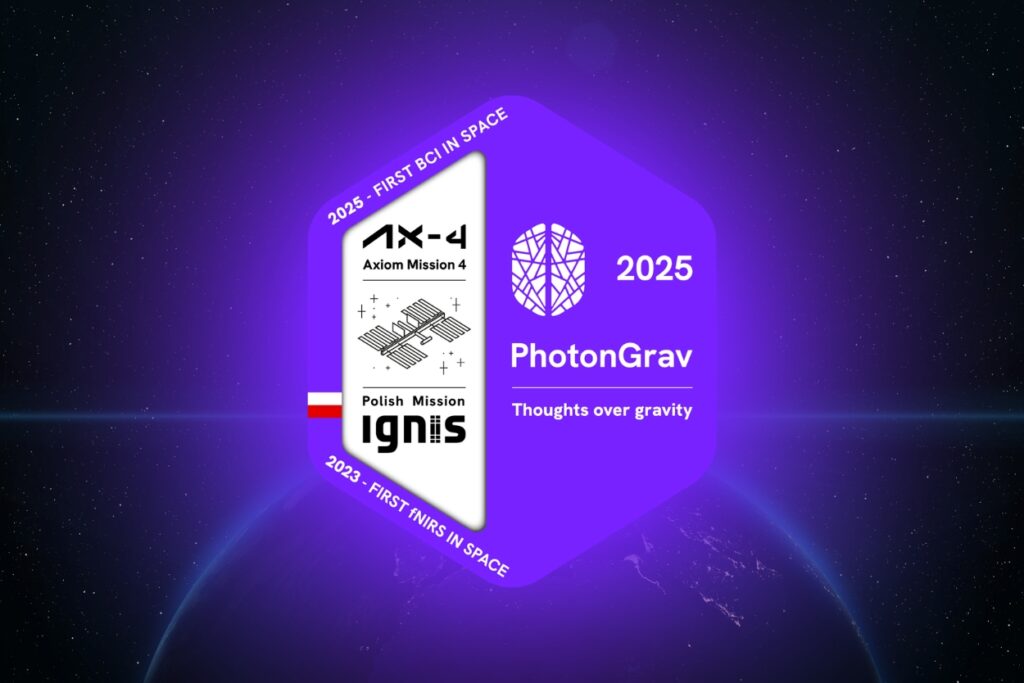In the annals of space exploration, certain milestones redefine our understanding of human potential. Cortivision's upcoming PhotonGrav project is poised to be one such milestone: the first-ever deployment of a fully operational brain-computer interface (BCI) in the microgravity environment of space.
The Scientific Leap: BCI Beyond Earth
BCI systems have captured imaginations and enabled new forms of communication — primarily through EEG (electroencephalography). However, EEG is notoriously vulnerable to motion, muscle activity, and environmental interference — all amplified in space.
PhotonGrav is a project fully developed by Cortivision which will shift that paradigm by deploying a functional near-infrared spectroscopy (fNIRS)-based BCI system aboard the International Space Station (ISS). Unlike EEG, fNIRS is more robust against movement and environmental noise, making it a more viable solution for microgravity conditions.
The experiment is designed to determine whether cognitive intent — such as performing a mental calculation or entering a state of relaxation — can be decoded from brain activity in space. The targeted brain regions, Dorsolateral Prefrontal Cortex (DLPFC) and Middle Frontal Gyrus (MFG), are key to focus and mental workload. A machine learning algorithm will interpret these signals in real time, enabling participants to control feedback with their thoughts alone.
In essence: astronauts will communicate with machines using their brains — not their hands — from orbit.
Imagine diving into a swimming pool just to sign your name at the bottom. May seem like a simple action you'd normally do with your eyes closed but in those conditions, even basic tasks become unexpectedly complex. The same applies to microgravity, where typical muscle-based communication may no longer be so straightforward.
Wojciech Broniatowski
fNIRS in space
The PhotonGrav experiment will be conducted by both Polish and Indian astronauts, highlighting the project’s international scope. Additionally, our fNIRS device will be utilized in a separate experiment combining fNIRS with virtual reality (VR) technologies, involving Hungarian and Indian astronauts. These collaborative efforts exemplify the global commitment to advancing neuroscience research in space.
Poland in Space: The Ignis Mission
PhotonGrav is also deeply significant for Poland, as part of a broader scientific return to space. The “Ignis” mission represents Poland’s first crewed mission in cooperation with Axiom Space and second Polish astronaut ever in space. It marks a symbolic and strategic moment for the country — placing Polish science and technology at the heart of human spaceflight for the first time in decades.
The inclusion of the PhotonGrav BCI experiment in Ignis is a powerful statement: Poland is not just participating in space exploration — it’s shaping its future.

Patch of the experiment PhotonGrav – Thoughts over gravity; a test of using fNIRS-based Brain-Computer Interface in LEO conditions.
Author:J.Marzoch
Cortivision’s Legacy in Space
Cortivision’s involvement in space neuroscience is not only pioneering — it is now also consistent. After making history during Axiom Mission 2 (Ax-2) in May 2023 by delivering the first-ever functional fNIRS system to the International Space Station (ISS), we have continued to strengthen our presence in orbit.
The Ax-2 mission marked the first time human brain activity was recorded in microgravity using functional near-infrared spectroscopy (fNIRS). This achievement proved not only the resilience of our technology but also Cortivision’s ability to deliver high-quality, high-integrity neuroimaging in one of the most extreme environments imaginable. Find out a publication from Bader Shirah PhD.
Our momentum continued with Axiom Mission 3 (Ax-3) in January 2024. During this mission, Swedish astronaut Marcus Wandt used Cortivision’s fNIRS system as part of a cognitive monitoring experiment. The data collected contributed to understanding mental workload, stress regulation, and the brain’s adaptation to space conditions. The success of this mission further validated the robustness of Cortivision’s platform, reinforcing its value in both basic research and applied cognitive monitoring in space.

Swedish astronaut Markus Wandt using Cortivision’s fNIRS in the Orbital Architecture Activity, from KTH Royal Institute of Technology, Ax-3 mission on the ISS, January 2024
With two successful missions — Ax-2 and Ax-3 — Cortivision is now recognized as a trusted provider of neurotechnology solutions for space research. We partner with Axiom Space and our growing heritage in orbit is a testament to our rigorous engineering, scientific partnerships, and readiness for future challenges. Whether in collaboration with national agencies, commercial partners, or interdisciplinary academic teams, we bring not only technology but also experience and reliability to space science projects.
Now, with the PhotonGrav project aboard Axiom Mission 4, Cortivision is preparing to take the next bold step: enabling the first fully functional brain-computer interface (BCI) experiment in space.
Mission Ax-4: Launching June 8, 2025
Axiom Mission 4 (Ax-4) is led by Axiom Space in cooperation with NASA. It features a multinational crew of astronauts conducting research in health, life sciences, materials science, and beyond.
Cortivision’s PhotonGrav experiment is scheduled to be presented live during the rocket launch — a rare public glimpse into the frontier of brain research in space. As the rocket climbs toward orbit, it will carry with it not only four astronauts but also the hopes of pushing neural science to the edge of known possibility.
For more about Ax-4: Axiom Mission Overview
Cross-Industry Potential: From Orbit to Earth
While PhotonGrav focuses on space, its implications extend far beyond the ISS.
The same Cortivision systems used in orbit can also be applied to fields on Earth — including defense, aviation, medicine, elite performance, rehabilitation, and human–machine interface development. The ability to read and interpret brain signals in real-time — especially under stress or isolation — has applications ranging from fighter pilot monitoring to surgical support and beyond.
We welcome partnerships across aerospace, neurotechnology, human factors, and AI — on Earth and beyond it.

